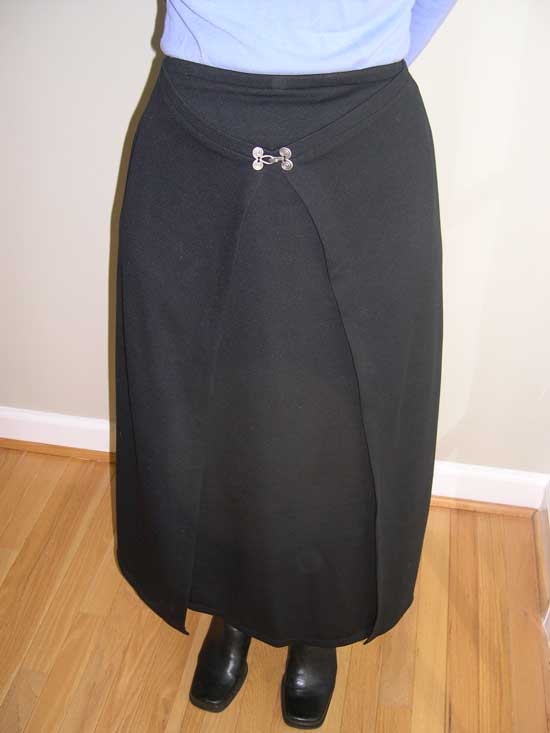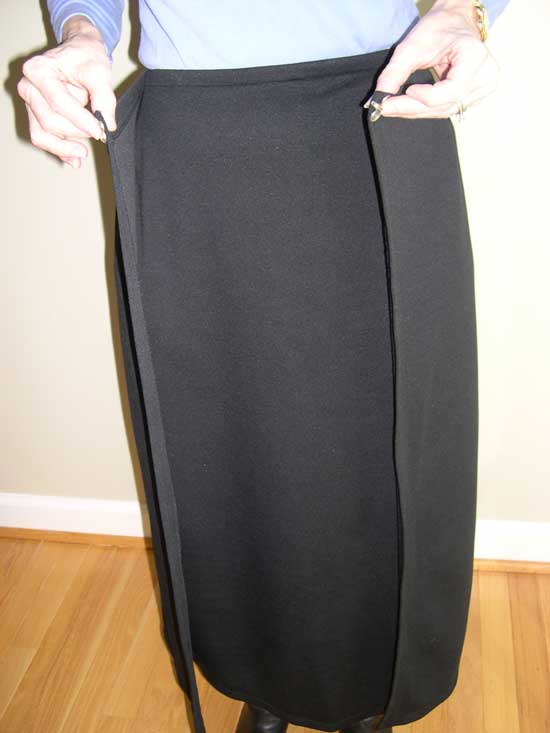The Cassandra Skirt
 Friday, February 4, 2011 at 9:34PM
Friday, February 4, 2011 at 9:34PM The sewing world lost a wonderfully talented designer and teacher in September of this year. Fred Bloebaum, who was familiar to so many for the classes she taught and the patterns she created, died after a battle with pancreatic cancer. The Cassandra Skirt by LaFred is a lovely and unique pattern. I first saw the skirt made up at the local sewing Expo several years ago and loved its simplicity and drape. Another sewing friend and American Sewing Guild member told me about the skirt she made from this pattern. She said that people would stop her on the street and in airports to ask about it.

The description on the pattern envelope reads: A fitted, flared mid-calf length skirt with separate center panel and side/back panel which wraps around and meets at center front with a decorative closure. Skirt is cut on the bias at the center back with a slightly fish-tail shaped hem and an invisible zipper. Suggested fabrics include those with drape and weight such as crepe (wool, silk or rayon), wool double knit or jersey and other drapey mid-weight fabrics. Even though the pattern cautions against using synthetics that will not hold a crisp edge when pressed, I dug into my stash and found a piece of black mystery cloth, a fairly heavy-weight knit that pressed reasonably well. The yardage requirement is fairly large for this skirt; there will be some large pieces left over (due to the single layer layout) so you may want to plan a matching garment from the remnants.
Fitting issues and finished length need to be resolved before construction, and the pattern gives tips on how to best accomplish these tasks. I found the pattern easy to adjust for a waist that is two to three sizes smaller than the hip. Since the side and back seams are straight lines it was easy to taper from the smaller size at the waist to a larger size at the hip. The pattern includes sizes 6 through 26 (hip size 32.5 through 50). I found the sizes ran a bit small; that is, I needed a size 14 for my hip measurement even though I tend to use a size 10 or 12 pattern when sewing from “the Big 4”. This would be a great pattern for a thin teen as the smallest waist size is 23 inches.
The instructions are very good and very thorough. There are two options for seam finishes (serging and turning under) as well as instructions for mitering corners, using tag board templates for pressing and installing an invisible zipper. The inside of the skirt turns out beautifully finished as all of the corners are mitered (eight, in all). One thing I particularly liked was that once the basic construction was completed the skirt was already hemmed and ready to wear.
The skirt is constructed in two units. The first is the front panel which is essentially a rectangle. All edges are turned under and the corners mitered. The second unit consists of two panels joined together at the center back seam by an invisible zipper. This seam line is flared which creates drape at the center back. The front edges of this unit are straight and are turned under and the corners mitered. The back section is lapped over the front panel and the two units are attached to one another at the side. The back panels are then closed at center front with a decorative closure.

I recommend you try this pattern. I think it would look lovely on a wide range of figure types, and the fitting involved is not too difficult. The style is casually elegant and the drape figure-flattering. And don’t be surprised if someone stops you on the street to ask, “Where did you get that wonderful skirt?”





